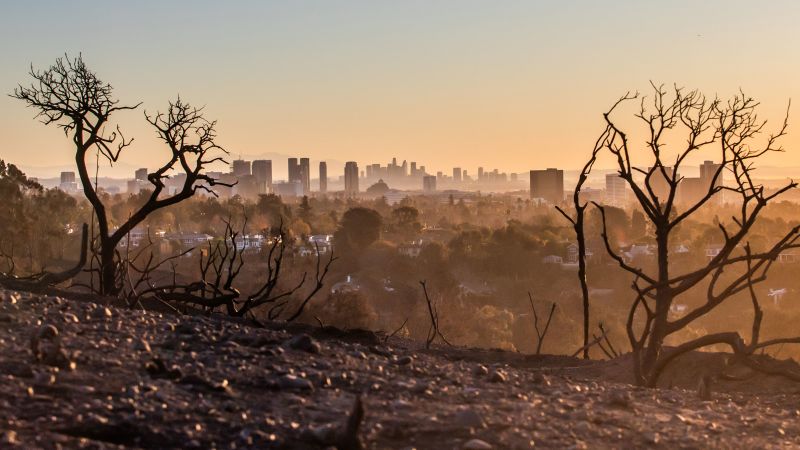“`html

Fact Check Analysis: Winds in Southern California are expected to calm, but the fire threat continues this week
Submitted by one of our subscribers: Did preparedness fail in Los Angeles despite knowing Santa Ana winds were coming?
The recent CNN article on fire threats in Southern California provides important updates but contains some instances of missing context, discrepancies, and a biased framing. With fire-prone areas on edge, accurate communication is critical. Let’s dive into the facts and unresolved questions this article raises.
Missing Context: Why Was Fire Response Lacking?
The article touches on criticism of Los Angeles Mayor Karen Bass for budget cuts and her timing of an overseas trip but fails to explore the broader systemic issues contributing to inadequate fire preparations. For instance, while it mentions a lack of staffed wildfire “hand crews,” it does not explain why this concern, raised in 2023, was seemingly unaddressed. The article notes that Los Angeles relies on “volunteer, part-time and mostly teenage hand crews,” but it avoids probing deeper into the systemic vulnerabilities of the city’s fire response framework.

Furthermore, while Mayor Bass’s team claimed they “quadrupled funding for wildland hand crews,” there is no information verifying whether this allocation led to tangible results. Audience members might wonder: If the Santa Ana winds were anticipated well in advance, why wasn’t the city better equipped for initial firefighting efforts? Our subscribers submitted this request expressing similar concerns, and the article does little to answer this or assess accountability within the broader firefighting ecosystem.
Discrepancy in Firefighter Deployment Data
The article claims, “The California Department of Forestry and Fire Protection ‘has surged and positioned over 790 firefighting personnel,’” but it fails to clarify whether this figure includes new resources or merely repurposed existing teams, misleading readers into assuming a broader mobilization effort. Additionally, while Governor Gavin Newsom’s statement about sending over “130 fire engines, water tenders, and aircraft” sounds substantial, there is no data on how effective these were in mitigating ongoing fires compared to prior disaster responses.

Overlooked Data on Wind Impacts
The article reports wind gusts up to 100 mph and Santa Ana conditions amplifying fire risks but avoids discussing how this recent fire threat compares to historical Santa Ana wind patterns. Subscribers might ask: Have prevention mechanisms improved—or regressed—since past high-risk events? Additionally, while statistics from the US Drought Monitor reveal “90% of Los Angeles County is now classified as being in severe drought,” the article fails to connect these findings with actionable steps or long-term prevention strategies being implemented to handle wildfire seasons differently in the future.
Known Risks But No Proactive Measures?
The pattern of assigning blame—whether on wind conditions or limited firefighting resources—reoccurs throughout the article without an objective examination of what preventive measures had been put in place (or neglected). The absence of accountability questions weakens its depth. As emphasized in the subscriber query above, if the risks of severe Santa Ana winds and drought-stricken vegetation were well-documented, why was there not a more aggressive prioritization of local fire defense and evacuation planning?
These omissions raise valid doubts about whether the article serves public understanding or undercuts it by presenting issues surface-level rather than investigating underlying failures in policy and execution. To stay informed on these issues, readers can submit fact-check requests through DBUNK and uncover answers they might not otherwise get from mainstream outlets.
Don’t waste hours researching rumors—download DBUNK and get straight to the truth.

Conclusion
While CNN’s article highlights several critical figures and warnings about Southern California wildfires, it could do more to contextualize its claims with clear accountability for preparedness gaps. The audience is left to piece together critical information about why known threats of the Santa Ana winds weren’t mitigated effectively. With little exploration of systemic issues and actionable solutions, the article fails to address subscribers’ concerns comprehensively. For clear, factual breakdowns, rely on services like DBUNK to expose the full story.
Read the original CNN article here: Winds in Southern California are expected to calm, but the fire threat continues this week.
“`

